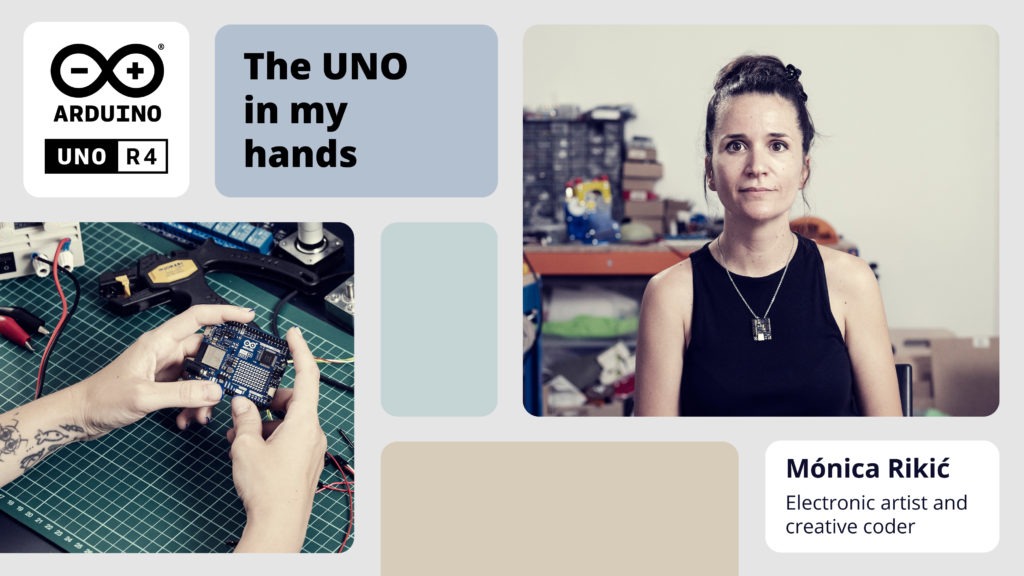UNO R4 Stars: Meet Monica Rikic
The launch of the Arduino UNO R4 marks a huge leap forward for our community. For us, it’s also the chance to celebrate the people who bring our ecosystem to life with their bright ideas, radiant enthusiasm, and shining insight.
That is how the UNO R4 Stars blog post series began: to highlight makers who have not only created amazing projects with Arduino, but who are giving back to the community by sharing as they go and helping others make anything they wish.
We invite you to discover each profile, hoping you might find a North Star to navigate around an expanding galaxy or venture into completely new universes.

Born and based in Barcelona, Spain, Monica Rikic is an award-winning artist who has chosen coding and creative electronics as her expressive media. Currently a PhD student at Universitat Oberta de Catalunya’s Network and Information Technologies program, she first encountered Arduino at school and quickly realized the platform would open up infinite opportunities for interactive works capable able of perceiving inputs from the physical context and generating different actions in response.
“Being a maker means not simply consuming technology, but taking on an active role in the dynamic where, every day, we are in contact with devices and applications that have become our gateways to relate to the world around us, to other people, and to ourselves as well,” she says.
Over the years, her philosophical and artistic approach have translated into projects such as Hipertèlia, of which she has recently set up a 2023 iteration at the Sala Apolo club in Barcelona thanks to a brand new Arduino UNO R4 WiFi: 20 “balloons” with LEDs inside, interacting with visitors thanks to a camera that tracks their position and communicates it to the system via Wi-Fi. The installation will be on-site until early November — if you are in Barcelona, check it out!
Rikic has also already developed a new project leveraging the UNO R4 Minima variant: “It’s a weird machine that generates infinite classical music, in collaboration with Rodo. Visitors at the Palau de la Musica can modify the output as they get closer to the installation, speak or even sing to it.”
What’s next? She is working on Hipèrbole, a new conceptual project for her EMAP European Residency with Hexagram at Concordia University in Montreal, Canada, exploring the intersection between art and AI from an original standpoint — not to test machines’ creative possibilities, but to experiment with the characteristics that artificial cognitive systems must have to be considered sentient organisms.
We asked Rikic, “What’s your favorite part of the UNO R4?”
- The 24V tolerance: “Being able to connect to a single power source, even when controlling multiple motors, makes my work a lot simpler.”
- The built-in mechanism that detects and prevents runtime errors: avoiding short circuits that could potentially harm the board and ruin a whole project is great, especially to keep students motivated.
- The Qwiic I2C connector: because it allows you to connect different sensors and actuators without soldering.
- The LED matrix: having a form of direct output helps you immediately see what you can create with electronics.
To find out more about Rikic’s artistic research and keep an eye out for the new installations she is setting up around the world, bookmark her website or follow her on Instagram.